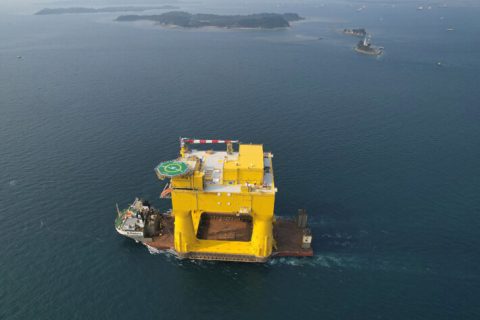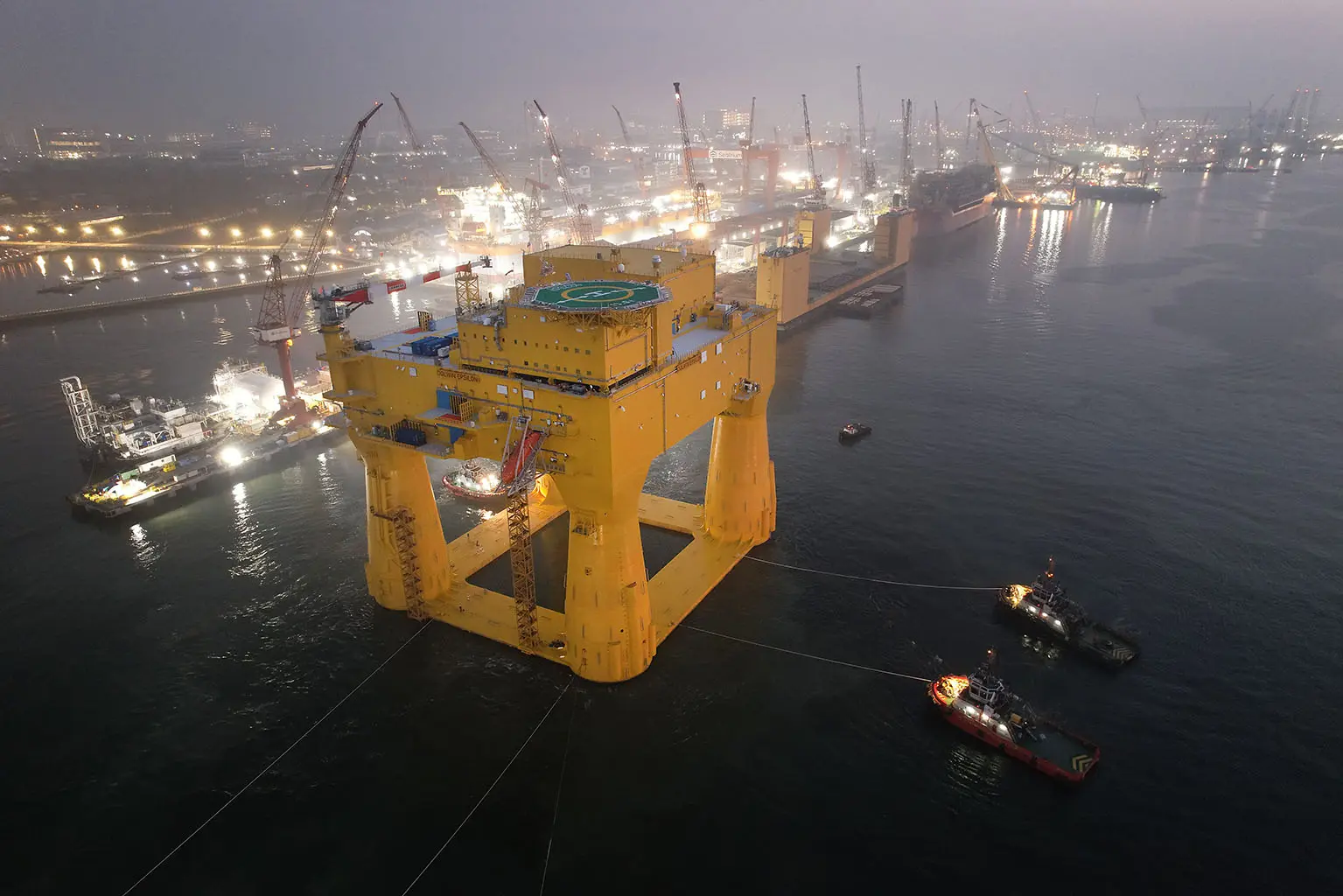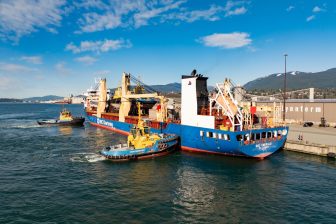
Mighty Servant 1 brings DolWin epsilon offshore platform to Norway
Heavy transport vessel Mighty Servant 1 has set course for the Aibel shipyard in Haugesund, Norway, transporting the 900 MW offshore wind platform DolWin epsilon. The vessel “piggybacked” the platform at the Seatrium shipyard in Singapore following three years of construction.
According to TenneT, the offshore transmission system operator, the journey will take some 60 days. The vessel will travel around 13,000 nautical miles at sea around the Cape of Good Hope and is expected at the Aibel shipyard in Haugesund (Norway) in December.
Once Mighty Servant 1 arrives with the platform in Norway, Aibel, as a partner of the consortium Aibel / Seatrium (formed from a combination of Sembcorp Marine and Keppel Offshore & Marine), will still carry out final technical equipment. Further Hitachi Energy as Aibel’s subcontractor and supplier for the HVDC technology, will install the converter and transformers. Next summer, the platform will be transported self-floating and installed at its final destination in the German North Sea.
TenneT said it is breaking new ground with the DolWin5 grid connection: for the first time, the so-called 66-kilovolt direct connection is being used. In comparison to previous projects, a wind farm transformer station is no longer required. Instead, the wind power produced off the coast of Lower Saxony is transmitted directly as three-phase (AC) current to TenneT’s DolWin epsilon converter platform. This also meant corresponding planning in the technical design of the platform and detailed agreements with the wind farm, whose technical systems are now located on the platform. The elimination of the wind farm’s transformer station not only minimises costs, but also construction time and interference with the marine ecosystem.

Tim Meyerjürgens, COO of TenneT, emphasised, “Following the recent commissioning of DolWin6, this project is now also on the home straight – this is of enormous importance as the grid expansion in the North Sea must be accelerated in order to achieve our expansion targets in Germany. With DolWin5 and the elimination of the transformer station, we can demonstrate that we are pursuing and implementing more efficient solutions. This is only an intermediate step before we set new standards with the 2GW program.”
The 2GW program represents the next generation of offshore grid connection systems: a new standardised platform, a new certified cable system, and a higher transmission capacity – with a lower environmental impact and the prospect of meshing in the future.
A special feature of the 82-metre-long by 73-metre-wide and 84-metre-high platform is the gravity-based foundation. So far, this has only been used for DolWin beta. It is based on the concept of a self-installing, gravity-based construction. The platform is slowly lowered to the 31-metre deep seabed by ballasting the four steel legs of the platform with water. The water is then replaced with heavy gravel to permanently secure the platform in-place for 30 years. Since no piles have to be driven into the seabed for anchoring, the installation is more quiet and more gentle on marine life. In addition, when such a platform reaches the end of its service life, the ballast can be removed from the hull and the complete platform towed to a harbour for dismantling.
You just read one of our premium articles free of charge
Register now to keep reading premium articles.




